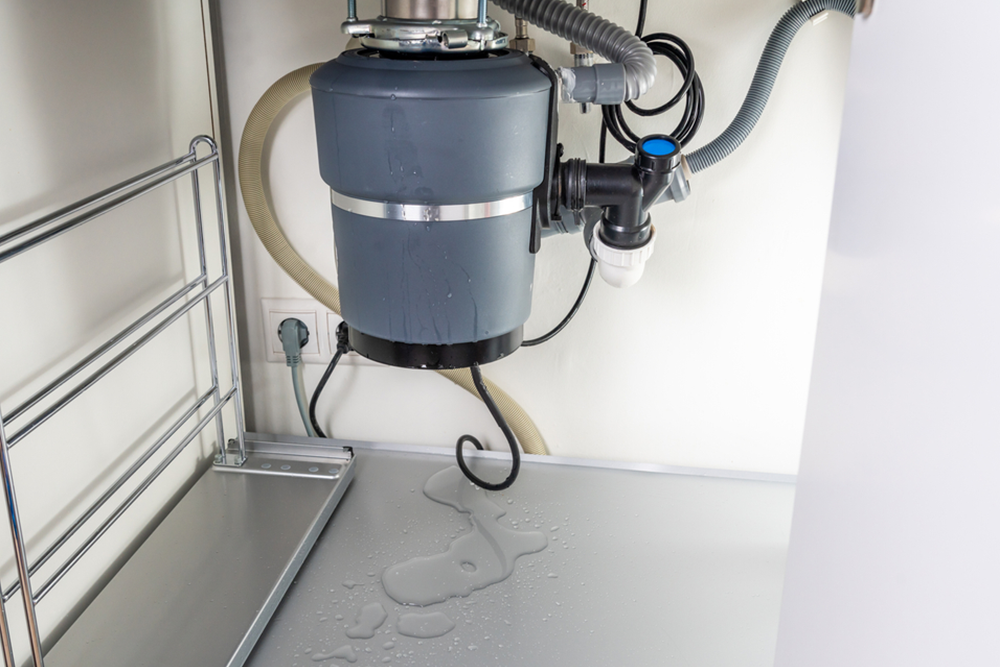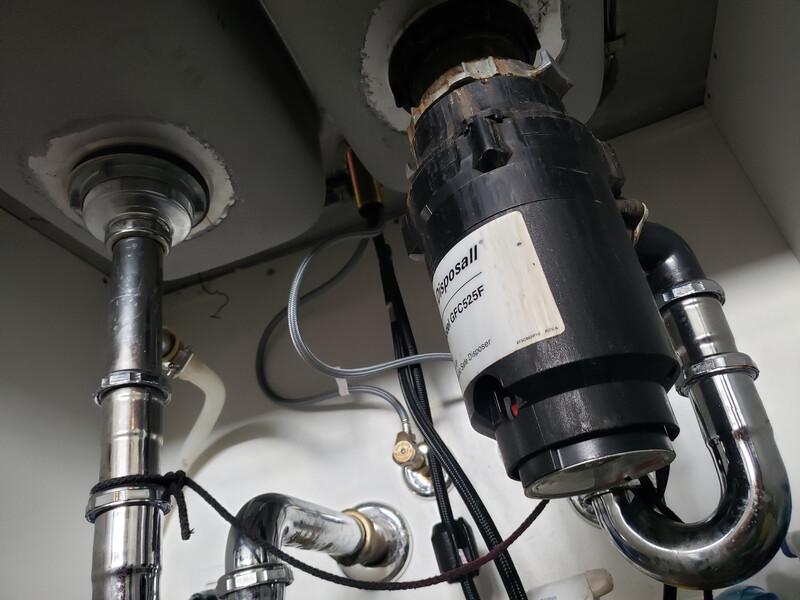Your Guide to Resolving a Leak in Your Garbage Disposal
Your Guide to Resolving a Leak in Your Garbage Disposal
Blog Article
We have encountered this great article pertaining to How to fix a pretty consistent leak from my garbage disposal below on the internet and accepted it made sense to discuss it with you in this article.

Waste disposal unit are necessary cooking area devices that help in dealing with food waste efficiently. Nonetheless, a dripping garbage disposal can be a frustrating and unpleasant problem to manage. Thankfully, many leakages can be dealt with quickly with a couple of easy steps. In this write-up, we will certainly talk about exactly how to repair a leaking garbage disposal successfully.
Intro
Garbage disposals are installed under kitchen sinks and are created to shred food waste right into smaller items, enabling it to travel through the plumbing system quickly. While these devices are generally reputable, leaks can take place over time due to wear and tear, loose links, or damage to the device.
Step-by-Step Overview to Repairing a Leaking Waste Disposal Unit
Shut off the Power
Prior to trying any repairs, ensure that the power to the waste disposal unit unit is switched off to stop the risk of electric shock.
Locate the Leak
Recognize the specific place of the leak and establish the cause
Tighten up Links
Make use of a wrench to tighten up any loose connections in between the disposal device and the plumbing system.
Replace Seals or Gaskets
If the leak is due to used seals or gaskets, remove the old components and replace them with brand-new ones.
Patching Splits or Holes
For splits or openings in the disposal system, usage epoxy or an ideal patching material to seal the broken location.
Determining the Source of the Leakage
Prior to attempting to repair a leaking garbage disposal, it is vital to recognize the source of the leakage. This can commonly be done via aesthetic evaluation or by conducting simple examinations.
Visual Evaluation
Evaluate the waste disposal unit system very carefully for any kind of indications of water leak. Pay attention to locations around seals, gaskets, and link factors.
Checking for Leaks
One means to examine for leakages is by running water via the disposal unit and looking for any noticeable indicators of leak.
Common Reasons For Leaks in Rubbish Disposals
Worn Seals and Gaskets
Seals and gaskets play a crucial role in preventing water from leaking out of the garbage disposal. Gradually, these elements can degrade, bring about leaks around the disposal unit.
Loose Links
The links between the waste disposal unit and the pipes system can become loose with time, causing water to leak out throughout procedure.
Splits or Openings in the Disposal System
Physical damages to the waste disposal unit, such as cracks or holes in the housing, can also result in leaks.
Tools and Materials Needed for Taking Care Of a Leaking Waste Disposal Unit
Before starting the repair process, gather the essential devices and materials, including a screwdriver, adjustable wrench, plumbing technician's putty, substitute seals or gaskets, and epoxy or patching material for fixing fractures or holes.
Evaluating the Waste Disposal Unit After Repair Work
As soon as the fixing is total, examine the garbage disposal by running water via it to guarantee that the leak has actually been dealt with.
Preventive Maintenance Tips to Stay Clear Of Future Leaks
To stop future leaks, it is important to carry out normal maintenance on your garbage disposal. This includes keeping it clean, preventing placing non-food items or tough objects down the disposal, and occasionally checking for leakages or other problems.
Final thought
Finally, fixing a leaking waste disposal unit is a reasonably straightforward procedure that can be finished with basic devices and materials. By complying with the steps described in this article and exercising preventative upkeep, you can keep your garbage disposal in good working condition and avoid expensive repairs in the future.
HERE’S HOW TO FIX YOUR GARBAGE DISPOSAL
WHAT TO DO IF SOMETHING IS STUCK IN YOUR GARBAGE DISPOSAL
If the impeller won’t turn, there’s probably something stuck in the disposal. It could be a steak bone or peach pit, although plumbers report pulling all sorts of inappropriate objects out of disposals, such as bottle caps or aluminum foil. Make sure power to the disposal is off, and look inside to see if you can see the source of the jam.
Never stick your fingers in a disposal. Pull out anything you see with tongs or pliers.
If the disposal still won’t work, it may be time to call a plumber or consider buying a new disposal. GEM Plumbing & Heating is here for all of your garbage disposal needs.
WHAT TO DO IF YOUR GARBAGE DISPOSAL DRAIN IS CLOGGED
Take everything out from underneath your sink and put a bucket or other container under your disposal to catch any water that drains out. Disconnect your disposal from the power supply. If it’s plugged into a wall outlet, unplug it. If it’s hardwired into an electrical box, go to the electrical panel and turn off the breaker for the disposal. Pour ¼ cup of baking soda into the drain, followed by ½ cup of white vinegar. Give the solution a few minutes to fizz and do its work. Look into the disposal with a flashlight to see if you can see an object that might be causing the clog. If you see it, remove it using tongs or pliers. MORE TIPS ON DEALING WITH A CLOGGED GARBAGE DISPOSAL
Never use drain cleaner in a garbage disposal. It can damage the plastic parts inside the disposal. You can also be splashed with the caustic liquid while working to clear the clog. Beware! Never stick your fingers into a garbage disposal. Trust us — not a good idea. In many instances, your dishwasher drains through your garbage disposal. This allows the disposal to grind any large food particles that may be drained out of your dishwasher. There are some jurisdictions, however, where the plumbing code prohibits such a connection. WHAT TO DO WHEN YOUR DISHWASHER DRAINS THROUGH THE DISPOSAL
Run some water in the sink so your plunger has at least a ½-inch of water to create a seal and plunge vigorously up and down several times. You may need to repeat this several times. Run hot water down the drain to clear any residue that remains.

I'm certainly very focused on Why Is and I really hope you liked the entire blog post. Appreciated our content? Please share it. Help another person discover it. Thank you so much for your time spent reading it.
Visit Website Report this page